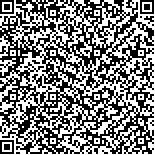|
|
| |
|
|
| 本文已被:浏览 2150次 下载 1794次 |

码上扫一扫! |
|
|
| 新疆棉区不同含盐土壤棉花健株与黄萎病株根区放线菌研究 |
|
白 霜1, 薛泉宏2, 赵邑尘1
|
|
1.西北农林科技大学 生命科学学院;2.西北农林科技大学 资源环境学院
|
|
| 摘要: |
| [目的]了解新疆棉区不同含盐量棉田健株与黄萎病病株根区土壤放线菌生态差异,并从中分离筛选对棉花黄萎、枯萎病有较好防效的生防放线菌,为棉花黄、枯萎病的生态防治提供依据.[方法]采用稀释平板法,对新疆棉区3组不同含盐量土样进行放线菌分离测数,采用皿内琼脂块法筛选拮抗放线菌.[结果]①在不同含盐量土壤中,棉花病株根区土壤有机质和可溶性总盐含量均高于健株,在高盐、中盐及低盐土壤中,棉花病株根区土壤有机质和可溶性总盐含量分别较健株高出5.7%,7.8%,20.1%和20.2%,15.0%,195.0%.土壤可溶性总盐含量愈低,病株与健株根区土壤有机质含量差异愈大,棉花病株与健株根区土壤pH无明显差异.②棉花病株根区土壤中放线菌总数均大于健株,在高盐、中盐及低盐棉田中,病株根区土埌放线菌总数较健株分别提高15.5%,59.4%及90.3%;在中盐土壤病株根区土壤中,链霉菌属、小单孢菌属及伴生细菌数量分别较健株高出38.5%,23.8%,295.7%,在低盐土壤中分别高出106%,35.7%及16.0%,高盐土壤中链霉菌属及伴生细菌数量与之相反.③从新疆棉田供试土壤中分离的81株放线菌中,有51株放线菌对靶标病原菌有拮抗性,占供试放线菌总数的62.9%,其中对棉花黄萎、枯萎及立枯病菌有拮抗性的菌株分别占供试放线菌总数的41.9%,51.9%及18.5%.④在高盐和中盐土壤中,从健株根区土壤分离筛选到的拮抗菌中,对棉花黄萎病有抗性的拮抗性放线菌比率略高于病株根区土,但低盐土壤表现为病株根区(63.6%)>健株根区(36.4%).⑤从棉花根区土壤中分离得到的放线菌中,对棉花黄萎病菌、枯萎病菌及立枯病菌有较强抗性的菌株分别占菌株总数的7.4%,9.8%及3.7%,无抗性的分别占55.5%,41.9%及82.7%.[结论]棉花黄萎病病害发生与棉花根区土壤有机质含量、可溶性总盐含量、土壤放线菌组成及拮抗性放线菌比例有一定关系. |
| 关键词: 棉花黄萎病 土壤微生物 放线菌 微生物生态 拮抗放线菌 |
| DOI: |
| 分类号: |
| 基金项目:国家“十一五”科技支撑计划项目(2006BAD05B07);国家自然科学基金重点项目(30630054) |
|
| Study on actinomycetic ecology between heathy and diseased plants'' rhizosphere with different salt contents in Xinjiang |
|
|
| Abstract: |
| 【Objective】 The study was to find out the difference between healthy and diseased plants’root-zone in Xinjiang cotton soil with different salinity,and screen antagonistic actinomycetes against cotton Verticillium wilt and Fusarium wilt from the soil,in order to offer a foundation for biocontrol against cotton Verticillium wilt and Fusarium wilt.【Method】 The quantity of actinomycetes was determined via dilution and plating.Agar piece method was used to screen the antimicrobial actinomycetes and measure the inhibition.【Result】 ①The study shows that,the organic matter content and soluble total salinity of diseased plants’ root-zone are higher than those of healthy plants in all 3 kinds of tested soils,Compared to its healthy plants' root-zone,the content of organic matter and soluble total salinity in diseased plants’ root-zone is 5.7%,7.8%,20.1% and 20.2%,15.0%,195.0% higher than those of healthy plants in high,middling and low salinity soil respectively.The lower the salinity is,the larger difference of organic matter between the diseased and healthy plants.②The total actinomycetes number of diseased cotton plants’root-zone is 15.5%,59.4%,90.3% higher than that of healthy plants' in high,mediate and low salinity soil respectively.The quantities' characteristic of Streptomyce,Micromonospra and companion bacteria is all in line with the above in mediate and low salinity soil.while in high salinity soil,it's the contrary.The Streptomyce,Micromonospraand companion bacteria’s amount of diseased plants’ root-zone is 38.5%,106%;23.8%,35.7%;295.7%,16.0% higher than that of the healthy plants in mediate and low salinity soil respectively.③Among 81 strains selected from tested soil of Xinjiang,51 strains have antagonistic action to those target pathogenic Fungi,being 62.9% of isolated actinomycetes.And 41.9%,51.9% and 18.5% of strains exhibit antagonistic action to cotton Verticillium wilt ,Fusarium wilt and Rhizoctonia solani respectively.④In high and mediate salinity soil,the antagonistic actinomycetes screened from the healthy plants’root-zone,have higher rate of antagonistic action than the diseased ones,while in low salinity soil,it shows the contrary.⑤Among the actinomycetes isolated from cotton rhizosphere,7.4%, 9.8%,3.7% have strong antagonistic action against cotton Verticillium wilt ,Fusarium wilt and Rhizoctonia solani respectively,while 55.5%,41.9%,82.7% have no any antagonistic action against cotton Verticillium wilt ,Fusarium wilt and Rhizoctonia solani.【Conclusion】 The pathogenesis of Verticillium wilt,the quantities,ratio and compose of actinomycetes of cotton plants’ root-zone are correlated with the contents of soil organic matter and salinity. |
| Key words: cotton Verticillium wilt soil microorganism actinomycetes microbial ecology antagonistic actinomycete. |
|
|
|
|